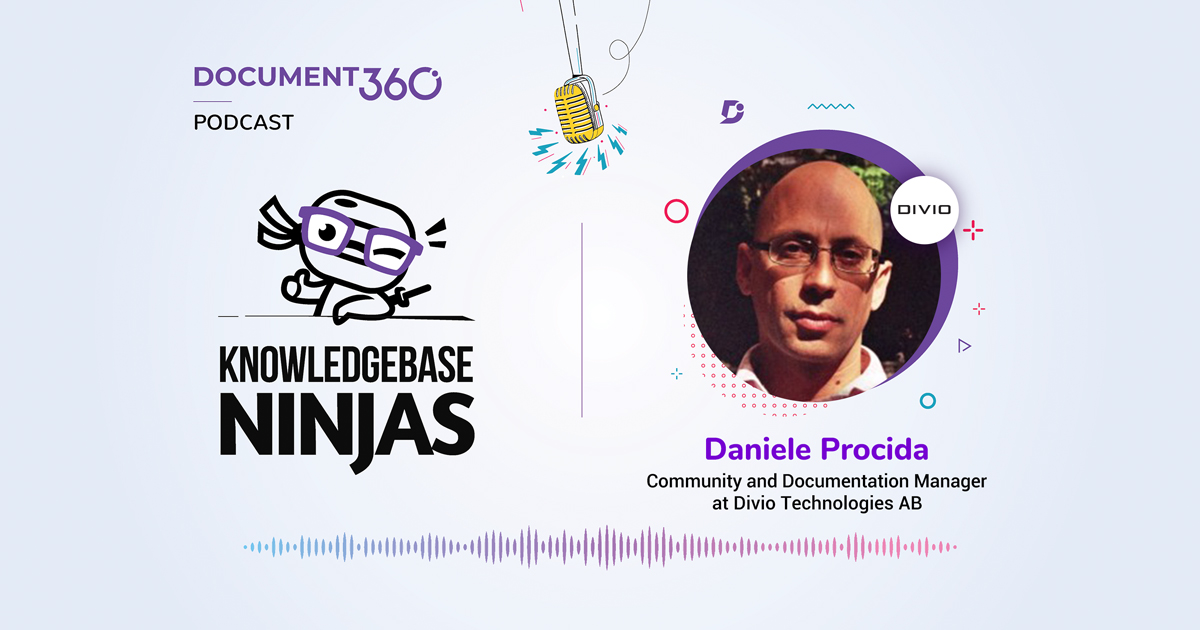In this episode of The Knowledgebase Ninjas Podcast, Gowri Ramkumar is joined by Sue Arkin, Documentation Lead at Unity Technologies. They discuss the evolution of documentation processes, what makes an efficient documentation team, and the strategies to produce user-friendly technical content.
Key Facts
- Sue’s LinkedIn
- Unity Technologies website
- Sue holds a Bachelor’s Degree in Humanities from Ha’Universita Ha’Petuha, a Postgraduate Diploma in Development Management from The Open University, and a Postgraduate Certificate in Conflict and Development
- Sue has fourteen years of versatile experience in technical documentation and leading relevant teams
- Sue’s focus is documenting user manuals, functional and software requirements specifications, internal training, user acceptance testing guidelines, and QA training guidelines
- Unity Technologies is the world’s leading platform for creating and operating real-time 3D (RT3D) content
Key Takeaways
- Sue started her content curation journey in 2002 as a Freelance Editor and Writer. In 2006, she joined SofTov (a laboratory information system) as a Technical Writer. This was the start of her legacy in technical documentation. Since then, she has worked at several technology companies as a Technical Writer, Staff Technical Author (IoT), Lead Software Support, and Documentation Lead
- Currently, as of 2022, Sue works at Unity Technologies as a Documentation Lead
- Unity is a 3-D engine popularly used to create video games. Creators such as architects and filmmakers can also use Unity’s platform to develop, run, and monetise interactive real-time 2D and 3D content for various devices
- While working with several companies; Sue’s biggest mind-shift has been transforming the online pdf only documents into a continuously integrated, multiple releases, and daily updates system
- According to Sue, the biggest shift in documentation has been the transformation of static documentation towards rapid documentation from when she started. She further explains that rapid documentation equips documentation teams to adapt to required changes in the document immediately
- Sue believes the key to great documentation lies in having a multi-dimensional team. She appreciates her team’s versatility and believes that other than grip over technical concepts and writing, a person should have the complementary ability to interact with various perspectives
- The technical documentation team at Unity Technologies consists of seven people. Whereas, the whole company has about seventy team members, segregated into a Quality Team, Innovation Team, and Tools Team that looks over the style guide, company standards, reviews documentation, conducts audits, and helps the organisation improve processes
- Sue believes that documentation success partially depends on what the development/engineering team does and whether a writer specialises in understanding and elaborating technical concepts. It is important to work very closely with the developers/engineers because they develop the first draft, which then undergoes technical, peer, and editorial reviews to ensure that the technical content helps the user
- Sue’s favourite stages in the documentation lifecycle are;
- Technical Review: This is where developers/engineers review the document and provide suggestions to the technical writing team to improvise the content further
- Publishing: This is where the document goes live, and you can see it performing in real-time
- Sue states that the most important innovation in documentation tracking is that technical documentation teams can now seek users’ support to submit a bug report for individual pages. This not only helps highlight where a specific mistake lies within a document but provides us with trends to improve documentation quality
- Unity Technologies documents are publically available online for users, and you can find them through the search engine or Unity Technology’s website. Sue shares that most of the traffic on Unity’s website comes from search engines (primarily from Google)
Key Resources
What documentation-related advice would Sue give to her 20-year-old self?
“Learn to manage your attention rather than your time or productivity”. Sue shares that younger writers try to manage and do everything all at once, hence being scattered and moving quickly from one thing to another. The best thing is to focus on one thing, finish it, and move to the next one.
Subscribe to Knowledgebase Ninjas




 –
– 

